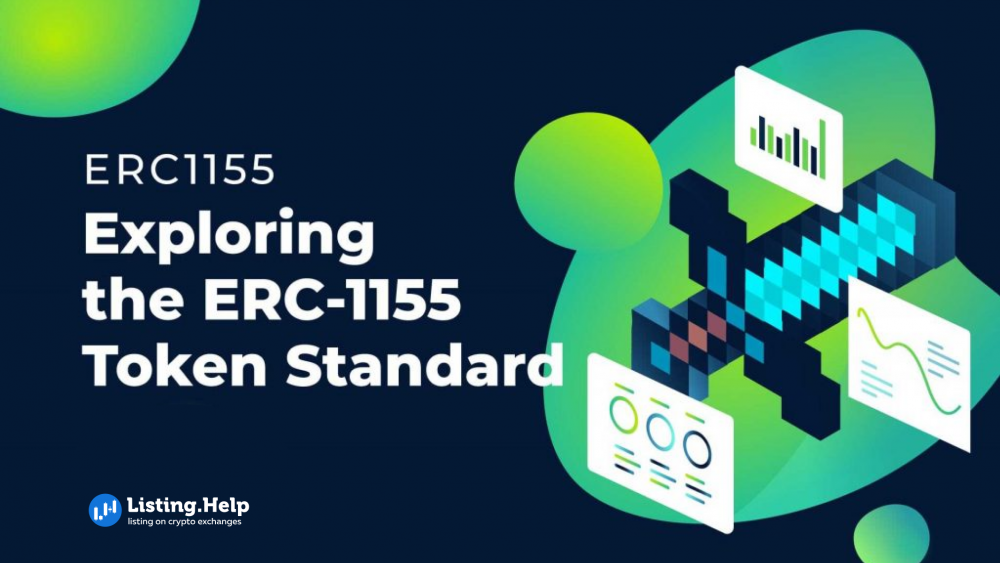
What Is ERC-1155 and How Does It Work?
Ethereum remains at the forefront of blockchain innovation, particularly through its introduction of smart contracts and DApps. An essential aspect of its evolution is the establishment of token standards, which are vital for ensuring interoperability across its platform.
While the ERC-20 and ERC-721 standards are commonly acknowledged, ERC-1155 is becoming notable for its integrated approach to token management on the platform. This section explores the ERC-1155 standard, highlighting its operation and influence on the blockchain sphere.
What Is ERC-1155 Standard?
ERC-1155, standing for Ethereum Request for Comments 1155, revolutionizes the protocols for smart contract and token functionality on Ethereum. This standard encompasses digital assets, which fall into two categories: fungible (exchangeable) and non-fungible (unique). Prior to ERC-1155, different frameworks like ERC-20 for fungible assets and ERC-721 for NFTs were utilized. ERC-1155 combines these features, providing a cohesive structure.
Imagine a blockchain-based game with an array of items such as weaponry, armor, and in-game currency. Previously, each category of item would necessitate its own distinct smart contract. ERC-1155 transforms this by permitting an array of item types to be included within a single contract. Thus, rather than managing multiple contracts for assorted item types, ERC-1155 allows for a unified management system, greatly simplifying the process.
What is the Difference Between ERC-721, ERC-20, and ERC-1155?
ERC-1155 serves as a comprehensive token standard that integrates the attributes of ERC-20 and ERC-721, offering a broad spectrum of token interactions on Ethereum.
ERC-20 is crucial for generating fungible assets, identical units that are exchangeable, like Bitcoin, where each piece holds equivalent value to another. This protocol supports a range of digital assets, such as BAT and UNI.
On the flip side, ERC-721 caters to non-fungible assets, distinct entities that aren’t interchangeable. Each token under this protocol is unique and suited for representing one-of-a-kind digital assets like artwork, collectibles, or game elements.
While ERC-20 and ERC-721 focus on specific asset types and necessitate individual contracts for each issuance, they lack support for assets that blend fungible and non-fungible characteristics. ERC-1155 addresses this gap.
ERC-1155 elevates operational efficiency and minimizes costs by consolidating fungible, non-fungible, and semi-fungible assets under a single contract. This consolidation empowers Ethereum developers with the flexibility to devise a diverse array of asset types, all maintained within an integrated framework.
Advantages of ERC-1155 for NFTs
– Efficient Transactions: ERC-1155 enables handling multiple token types — fungible, non-fungible, and semi-fungible — within one transaction. This functionality not only reduces costs but also quickens the transaction process compared to the traditional method, where each token type requires a separate transaction.
– Broad Versatility: This standard allows a vast array of tokens to be managed under one smart contract, giving creators the ability to produce and manage diverse tokens for various uses without needing separate contracts for each category.
– Optimized Contract Use: Before ERC-1155, individual contracts were needed for each type of token, leading to inefficiency. ERC-1155’s method, which combines different token types in one contract, cuts down on this redundancy, conserving Ethereum blockchain space and resources.
– Security Enhancements: ERC-1155 includes a function that ensures secure transfers, allowing for the recovery of tokens if sent to an incorrect address, providing a level of security not present in other standards like ERC-20 or ERC-721.
– Approval Process Streamlining: With ERC-1155, the need for separate approvals for each token contract is eliminated, simplifying interactions for users by reducing the number of necessary confirmations.
5 Key Uses of ERC-1155
1. Gaming Industry: ERC-1155 is a game-changer in gaming, enabling a mix of in-game assets like weaponry, clothing, and virtual coins to be grouped under various token types. This standard allows for efficient storage and trading of these elements within one contract, thus elevating the gaming experience.
2. For DAOs: In the realm of DAOs, which utilize a variety of token types for governance and operations, ERC-1155 proves invaluable. It offers a streamlined approach to managing a diverse set of tokens within a singular contractual environment.
3. Digital Art and Collectible Spheres: In the digital art and collectibles sector, ERC-1155 is beneficial, supporting the issuance and management of items across a spectrum of rarity and uniqueness. This standard offers an adaptable and effective method for digital creators and collectors.
4. Asset Tokenization: ERC-1155 introduces a novel approach to dealing with physical assets by enabling their tokenization. This functionality allows assets such as properties, metals, or intellectual rights to be tokenized, facilitating easier and more efficient trading and ownership transfers.
5. Rewards and Loyalty Platforms: Businesses can leverage ERC-1155 to build detailed rewards and loyalty platforms, incorporating various token types like points, medals, or special digital items. This consolidated contract approach simplifies program management, enhancing user interaction and loyalty.
Conclusion
Even though ERC-1155 has been available for some time, it hasn’t reached the same level of adoption as the well-known ERC-20 and ERC-721 standards. This might be attributed to insufficient knowledge about its functionalities. Yet, as the blockchain community becomes more acquainted with the comprehensive features of ERC-1155, there’s potential for a gradual shift toward this adaptable standard, recognizing its benefits for a wider range of applications.

For more insights into blockchain technologies and their evolving landscapes, visit our blog at Listing Help. Stay informed about the latest developments and breakthroughs in the blockchain world.

